Baarle: The Enclave Town Split Across Two Nations
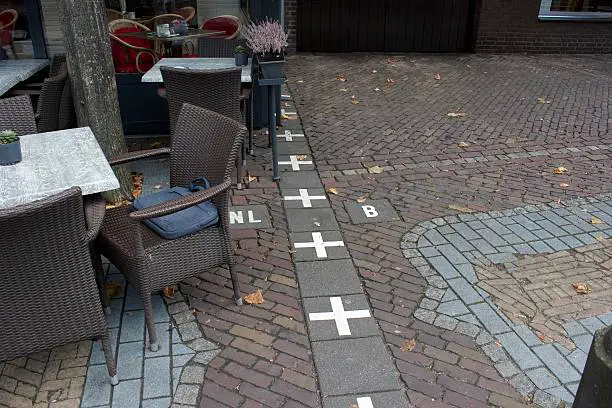
Baarle is a unique town located in the Netherlands and Belgium, with a complex border that runs right through its streets. The town is split into more than 20 separate enclaves, each with its own rules and regulations, and is a fascinating example of how historical border disputes can shape the geography and culture of a region.
The history of Baarle is a long and complex one, dating back to the medieval period. At that time, the area was ruled by various lords and dukes, each with their own territories and borders.
Over time, these borders shifted and changed, leading to the creation of the complex web of enclaves that we see in Baarle today.
The borders between Belgium and the Netherlands were formally established in the mid-19th century, but the borders within Baarle remained unchanged. This has led to a situation where the town is divided into numerous enclaves, with some streets and even individual houses straddling the border between the two countries.
The unique border situation in Baarle has led to a number of interesting quirks and anomalies. For example, some houses have front doors in one country and back doors in another, while others have different postal addresses depending on which side of the street they are on.
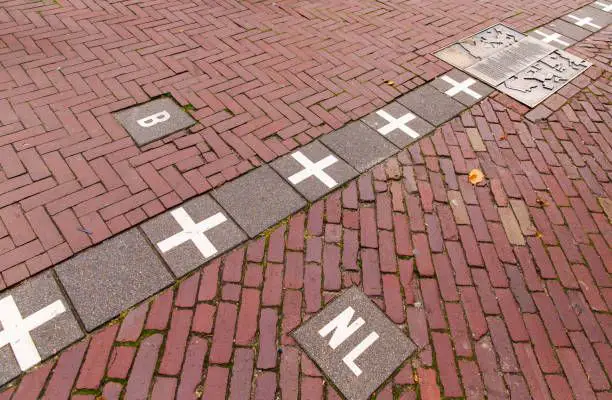
Despite the complexity of the situation, the people of Baarle have learned to live with their unusual border arrangement. They have developed a unique sense of identity and community, and have found ways to work together to ensure that the town functions smoothly despite the challenges posed by the border.
One interesting example of this is the way in which Baarle has developed its own set of customs and traditions, such as the annual "border walk" which takes place each year to celebrate the town's unique situation. During the walk, participants follow a route that takes them through all of the town's enclaves, with each section marked by a different flag.
Another interesting aspect of life in Baarle is the way in which the town's residents have learned to navigate the complex legal and administrative systems that govern the town. Each enclave has its own set of rules and regulations, which can be quite different from those in neighboring enclaves. This means that residents of Baarle must be careful to abide by the rules of each enclave they are in, and must often deal with multiple sets of paperwork and bureaucracy.
Despite the challenges posed by its unique situation, Baarle is a thriving and vibrant community, with a rich cultural heritage and a strong sense of identity. It is a fascinating example of how historical border disputes can shape the geography and culture of a region, and serves as a reminder of the complex and interconnected nature of our world.
The History of Baarle
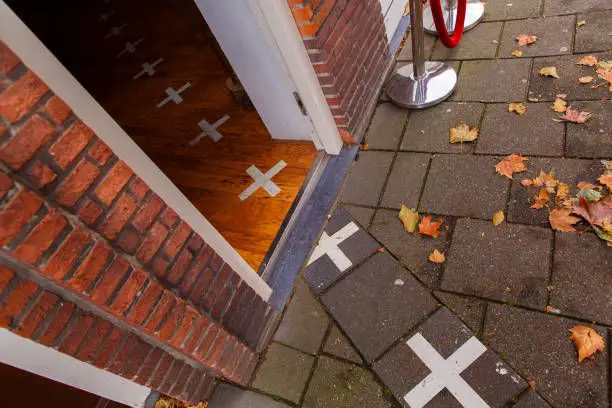
The history of Baarle is a long and complex one, dating back to the medieval period. At that time, the area was ruled by various lords and dukes, each with their own territories and borders.
Over time, these borders shifted and changed, leading to the creation of the complex web of enclaves that we see in Baarle today.
The town of Baarle is located on the border between the Netherlands and Belgium, and is divided into 22 separate enclaves, each of which is surrounded by the territory of the other country.
The border runs through the town in a complex pattern, with some streets and even individual houses straddling the border between the two countries.
The roots of Baarle's unique border situation can be traced back to the medieval period, when the area was ruled by various lords and dukes who each had their own territories and borders.
Over time, these borders shifted and changed, leading to the creation of a complex web of enclaves and exclaves within the region.
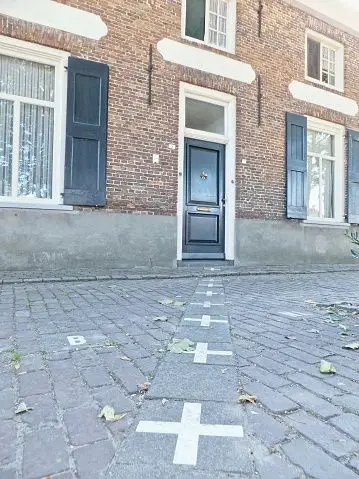
In the 16th century, the area came under the control of the Habsburgs, who ruled over much of Europe at the time. The Habsburgs attempted to simplify the border situation by dividing the area into two main parts, each of which was assigned to either the Netherlands or Belgium.
However, this did not resolve the complex border situation within Baarle itself. The town remained divided into numerous separate enclaves, each with its own rules and regulations, and each surrounded by the territory of the other country.
The borders between Belgium and the Netherlands were formally established in the mid-19th century, but the borders within Baarle remained unchanged. This has led to a situation where the town is divided into numerous enclaves, with some streets and even individual houses straddling the border between the two countries.
Despite the complexity of its border situation, Baarle has managed to thrive as a community. Its residents have developed a strong sense of identity and community, and have found ways to work together to ensure that the town functions smoothly despite the challenges posed by the border.
The history of Baarle and the development of its unique border situation is a fascinating example of how historical border disputes can shape the geography and culture of a region.
It serves as a reminder of the complex and interconnected nature of our world, and provides valuable insights into the challenges and opportunities posed by cross-border cooperation and collaboration.
An Exploration of The Town's Different Enclaves
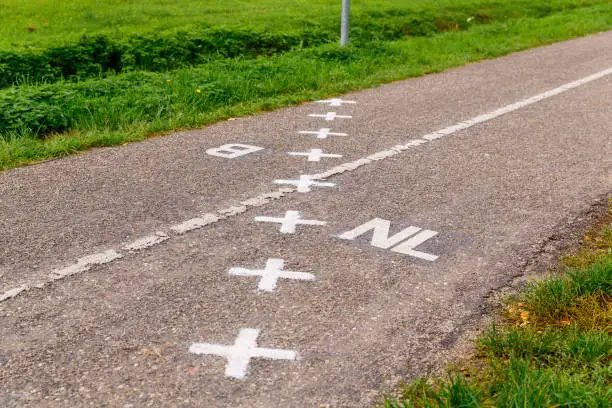
Baarle is a town located on the border between the Netherlands and Belgium, and is divided into 22 separate enclaves, each of which is surrounded by the territory of the other country.
These enclaves are further divided into smaller sub-enclaves, creating a complex pattern of borders and boundaries that is unique in the world.
Despite the complexity of its border situation, Baarle functions as a cohesive community, with residents from both countries living and working together in harmony.
Each enclave is governed by its own set of rules and regulations, which are typically based on the laws and customs of the country in which the enclave is located.
One of the unique aspects of Baarle's border situation is that it creates a number of practical challenges for residents. For example, a resident of an enclave in the Netherlands may need to cross the border into Belgium in order to access certain services or facilities, such as a post office or a bank.
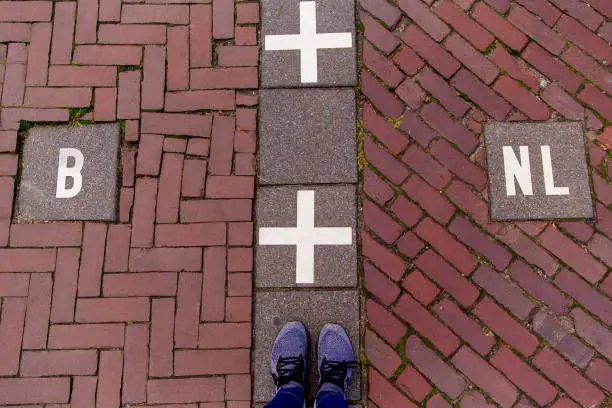
Similarly, a resident of an enclave in Belgium may need to cross the border into the Netherlands in order to reach a nearby school or hospital.
To address these challenges, the residents of Baarle have developed a number of creative solutions. For example, some businesses and public services have been established in neutral areas of the town, which are not located within any particular enclave. This allows residents from both countries to access these services without having to cross the border.
In addition, the town's residents have developed a strong sense of community and identity, which transcends national borders. Many of the town's cultural traditions and customs, such as the annual "border walk", are based on the shared history and experiences of the town's residents, rather than on national identity.
Despite the challenges posed by its border situation, Baarle is a thriving and dynamic community, with a strong sense of identity and a commitment to cooperation and collaboration across national borders.
Its unique history and culture make it a fascinating and inspiring example of how diverse communities can come together to create a shared future.
The Challenges Faced by Residents of Baarle in Navigating The Complex Legal and Administrative Systems

Baarle, the town located on the border between the Netherlands and Belgium, is divided into 22 separate enclaves, each of which is surrounded by the territory of the other country.
This complex border situation creates a number of challenges for residents in terms of navigating the legal and administrative systems of both countries.
One of the main challenges faced by residents of Baarle is the need to comply with two different sets of laws and regulations.
For example, a resident of an enclave in the Netherlands may be subject to Dutch laws and regulations when it comes to issues such as taxes and healthcare, while also being subject to Belgian laws and regulations when it comes to issues such as property ownership and inheritance.
This can lead to confusion and uncertainty for residents, who may not be sure which laws and regulations apply to their particular situation.
In some cases, this can also lead to situations where residents are subject to conflicting or contradictory laws, which can be difficult to reconcile.
Another challenge faced by residents of Baarle is the need to navigate two different administrative systems.
For example, a resident of an enclave in the Netherlands may need to obtain permits or licenses from both Dutch and Belgian authorities in order to carry out certain activities, such as starting a business or making home renovations.
This can be a time-consuming and complex process, which requires a good understanding of both the Dutch and Belgian administrative systems.
It can also be expensive, as residents may need to pay fees or hire lawyers to help them navigate the process.
Despite these challenges, the residents of Baarle have developed a number of creative solutions to help them navigate the complex legal and administrative systems.
For example, they have established cross-border organizations and committees, which are designed to help residents navigate the different legal and administrative systems of both countries.
They have also developed a strong sense of community and mutual support, which enables residents to work together to overcome challenges and find solutions to common problems.
This sense of community is one of the key strengths of Baarle, and has helped to ensure that the town remains a vibrant and dynamic place to live, work, and visit.
The Cultural Traditions and Customs of Baarle

Baarle is a town located on the border between the Netherlands and Belgium, and is divided into 22 separate enclaves, each of which is surrounded by the territory of the other country.
Despite its complex border situation, Baarle has a rich cultural history, which is reflected in its many traditions and customs.
One of the most important cultural traditions in Baarle is the annual "border walk", which takes place every year on the first Sunday in September.
During the border walk, residents of Baarle and visitors from around the world gather together to walk along the town's complex network of borders and enclaves, learning about the town's history and culture along the way.
The border walk is a celebration of the unique cultural heritage of Baarle, and is a chance for residents to come together and celebrate their shared identity as citizens of this unique and special place.
Along the way, walkers are treated to music, food, and drink, as well as a chance to meet and interact with their fellow walkers.
In addition to the border walk, Baarle has a number of other cultural traditions and customs, which are rooted in the town's long and complex history. For example, the town has a strong tradition of lace-making, which dates back to the 17th century.
Today, the town's lace-makers continue to produce exquisite works of art, which are highly prized by collectors and art lovers around the world.
In addition to lace-making, Baarle is also known for its traditional folk music and dance, which is an important part of the town's cultural identity.
Other important cultural traditions in Baarle include the celebration of Carnaval, which takes place in the weeks leading up to Lent, and the annual "Kermis", or fair, which is held every September.
Overall, Baarle is a town with a rich and complex cultural heritage, which is reflected in its many traditions and customs.
The annual border walk is just one example of the town's unique cultural identity, which continues to be celebrated and cherished by residents and visitors alike.
The Impact of Baarle's Unique Situation on its Economy and Infrastructure
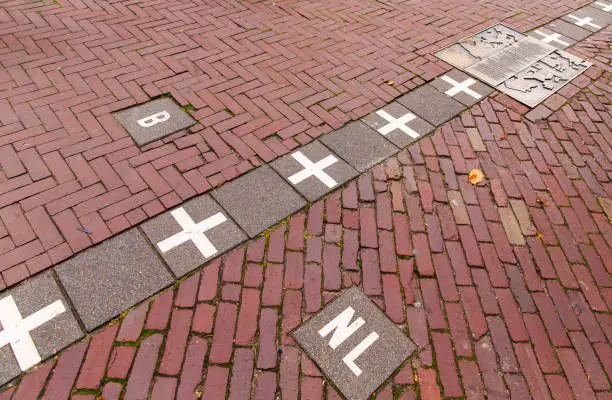
Baarle, the town located on the border between the Netherlands and Belgium, is divided into 22 separate enclaves, each of which is surrounded by the territory of the other country. This complex border situation has a significant impact on the town's economy and infrastructure.
One of the main impacts of Baarle's unique situation on its economy is that it is heavily dependent on cross-border trade and commerce.
Due to the town's location on the border between two countries, many businesses in Baarle serve customers from both the Netherlands and Belgium, and often need to comply with different sets of laws and regulations in order to do so.
This can create significant challenges for businesses in terms of navigating the complex legal and administrative systems of both countries.
For example, businesses may need to obtain permits and licenses from both Dutch and Belgian authorities in order to operate, which can be time-consuming and expensive.
In addition to these challenges, Baarle's unique situation also has a significant impact on the town's infrastructure. Due to the complex network of borders and enclaves, it can be difficult to provide public services such as transportation and utilities to all parts of the town.
For example, some parts of Baarle may be located in the Netherlands, while others may be located in Belgium, which can make it difficult to coordinate infrastructure projects and services across the entire town.
Despite these challenges, Baarle has developed a number of innovative solutions to help address these issues. For example, the town has established cross-border committees and organizations, which are designed to help businesses and residents navigate the complex legal and administrative systems of both countries.
In addition, the town has also invested in a number of infrastructure projects designed to improve transportation and other public services across the entire town.
These initiatives have helped to ensure that Baarle remains a vibrant and dynamic place to live, work, and visit, despite its unique and complex border situation.
The Relationship Between Baarle and its Neighboring Towns and Cities
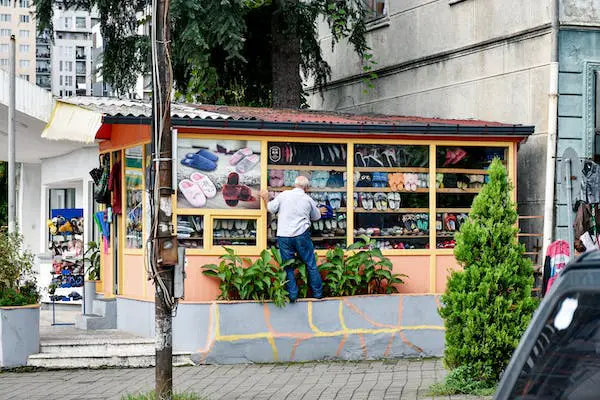
Baarle, the town located on the border between the Netherlands and Belgium, has a unique relationship with its neighboring towns and cities, which is shaped by its complex border situation.
On the one hand, Baarle is closely connected to its neighboring towns and cities, both in the Netherlands and in Belgium. Many residents of Baarle work or do business in nearby towns, and the town also relies on nearby cities for access to services and infrastructure.
At the same time, however, Baarle's unique situation as a town divided into 22 separate enclaves means that it also has a distinct identity and sense of community, which is separate from that of its neighboring towns and cities.
This can create both opportunities and challenges for Baarle's relationship with its neighbors. On the one hand, the town's unique identity and cultural heritage can be a source of pride and interest for residents and visitors alike, and can help to draw attention to the town's economic and cultural offerings.
At the same time, however, the complex border situation can also create challenges in terms of coordination and cooperation with neighboring towns and cities.
For example, the town may need to work with multiple jurisdictions and governments in order to coordinate infrastructure projects or public services, which can be time-consuming and complicated.
Despite these challenges, Baarle has developed a number of innovative solutions to help build relationships with its neighboring towns and cities.
For example, the town has established cross-border committees and organizations, which are designed to help coordinate economic and cultural initiatives across borders.
In addition, Baarle also participates in a number of regional initiatives and organizations, which help to promote cooperation and coordination between neighboring towns and cities.
Overall, Baarle's relationship with its neighboring towns and cities is shaped by its unique border situation, which can create both opportunities and challenges.
Despite these challenges, however, the town has developed a number of innovative solutions to help build strong and productive relationships with its neighbors, which will help to ensure its continued success and prosperity in the future.
Baarle as a Model for Cross-Border Cooperation and Collaboration
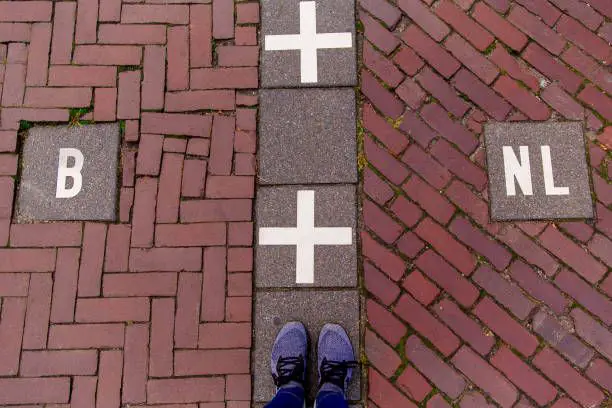
Baarle, the town located on the border between the Netherlands and Belgium, is often cited as a model for cross-border cooperation and collaboration.
Despite the complexity of its border situation, Baarle has managed to develop innovative solutions to promote cooperation and collaboration across borders, which can serve as a valuable example for other regions and communities facing similar challenges.
One of the key factors that has contributed to Baarle's success as a model for cross-border cooperation is the town's strong sense of community and identity.
Despite the fact that Baarle is divided into 22 separate enclaves, residents of the town have developed a strong sense of shared heritage and culture, which has helped to promote cooperation and collaboration across borders.
In addition to this shared sense of identity, Baarle has also developed a number of innovative solutions to help promote cross-border cooperation and collaboration.
For example, the town has established cross-border committees and organizations, which are designed to help coordinate economic and cultural initiatives across borders.
These initiatives include joint marketing campaigns, cross-border tourism initiatives, and cross-border trade and investment initiatives, which are designed to promote economic growth and development on both sides of the border.
Furthermore, Baarle has also invested in a number of infrastructure projects designed to improve transportation and other public services across the entire town, despite the challenges posed by the complex border situation.
Overall, Baarle serves as an excellent example of how cross-border cooperation and collaboration can be achieved, even in the face of complex legal and administrative systems.
By developing a strong sense of community and identity, and by investing in innovative solutions to promote cooperation and collaboration across borders, Baarle has managed to build a vibrant and prosperous community that serves as a model for other regions and communities facing similar challenges.
The Impact of Baarle's Unique Situation on its Residents' Sense of Identity and Belonging
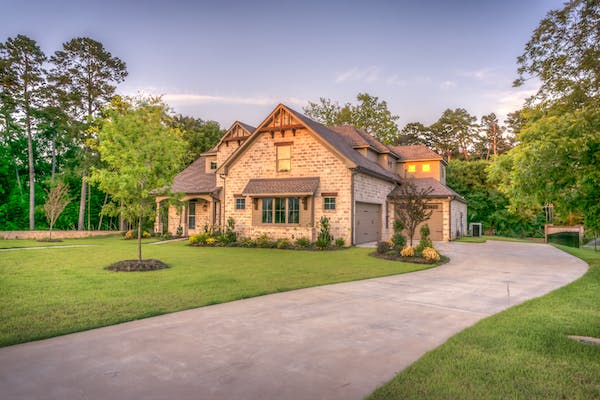
Baarle, the town located on the border between the Netherlands and Belgium, has a unique situation where it is divided into 22 separate enclaves, which are spread across both countries.
This complex border situation has had a significant impact on the sense of identity and belonging of Baarle's residents.
On the one hand, Baarle's unique situation has helped to foster a strong sense of local pride and identity among its residents.
Despite the fact that the town is divided into multiple enclaves, residents often identify first and foremost as "Baarlenaren," or residents of Baarle.
This shared identity is reinforced by a number of cultural traditions and customs, such as the annual "border walk," which celebrate Baarle's unique heritage and culture.
At the same time, however, the complex border situation can also create feelings of uncertainty and confusion among Baarle's residents.
Because the town is divided into multiple enclaves, residents may need to navigate different legal and administrative systems depending on which part of the town they live in.
This can create a sense of dislocation and frustration among some residents, particularly those who feel that they are caught between two different countries.
Despite these challenges, however, Baarle's residents have found ways to adapt and thrive in their unique situation.
Many residents have developed strong social networks and support systems within their own enclaves, which help to reinforce their sense of belonging and identity.
In addition, the town as a whole has developed a strong sense of community and solidarity, which helps to promote cooperation and collaboration across borders.
Overall, Baarle's unique situation has had a significant impact on the sense of identity and belonging of its residents.
While the complex border situation can create feelings of uncertainty and confusion, it has also helped to foster a strong sense of local pride and identity, which is celebrated through a number of cultural traditions and customs.
By adapting to their unique situation and working together as a community, Baarle's residents have managed to create a vibrant and thriving town that serves as an inspiration to others facing similar challenges.
The Future of Baarle and The Prospects for Resolving its Border Situation
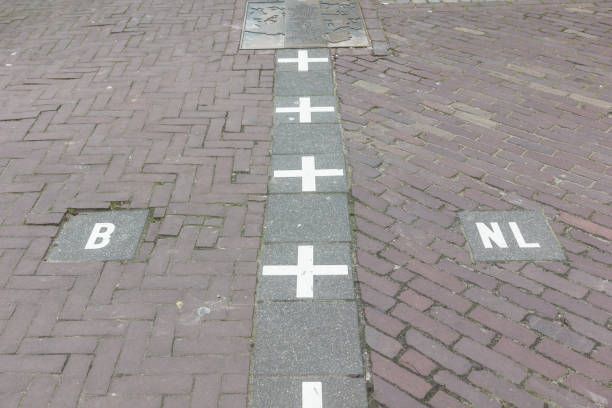
The future of Baarle, the town located on the border between the Netherlands and Belgium, is closely tied to the prospects for resolving its complex border situation.
While there have been some efforts to address the issues posed by Baarle's multiple enclaves, there is still much work to be done to ensure a sustainable and prosperous future for the town.
One potential solution to Baarle's border situation is to redraw the border between the Netherlands and Belgium to simplify the town's administrative and legal systems.
However, this option is complicated by the fact that the current border has historical roots that date back centuries, and any changes would need to be carefully negotiated between the two countries.
Another option is to continue to work within the current administrative and legal systems to promote cross-border cooperation and collaboration.
Baarle has already made significant progress in this area, establishing cross-border committees and organizations to coordinate economic and cultural initiatives across borders.
By continuing to invest in these initiatives, and by leveraging the town's unique cultural heritage to promote tourism and economic development, Baarle could continue to thrive in the years to come.
Ultimately, the future of Baarle will depend on the ability of its residents and local leaders to adapt to the challenges posed by its unique border situation.
By working together to find creative solutions and by leveraging the town's strengths and unique cultural heritage, Baarle can continue to serve as a model for cross-border cooperation and collaboration in the years to come.
The Tourism Industry in Baarle

Baarle, the town located on the border between the Netherlands and Belgium, has a unique and fascinating history that makes it a popular destination for tourists from around the world.
Its complex border situation, with 22 separate enclaves spread across both countries, is a major draw for visitors who are intrigued by the town's unusual administrative and legal systems.
The tourism industry in Baarle has grown significantly in recent years, as the town has worked to promote its unique cultural heritage and to attract visitors from a variety of backgrounds.
One of the most popular attractions in Baarle is the annual "border walk," a guided tour that takes visitors through the different enclaves and provides a detailed history of the town's development over the centuries.
In addition to the border walk, Baarle also boasts a number of other cultural and historical attractions, including a museum that explores the town's unique heritage and a variety of restaurants and cafes that showcase local cuisine and hospitality.
Visitors to Baarle can also enjoy a variety of outdoor activities, such as hiking and biking in the surrounding countryside.
The town's unique appeal to visitors is based on more than just its history and cultural heritage, however. Baarle is also known for its warm and welcoming atmosphere, with residents who are proud to share their town with visitors from around the world.
This sense of hospitality and community is one of the town's greatest strengths, and it has helped to create a vibrant and welcoming environment that appeals to tourists from all walks of life.
Looking to the future, the tourism industry in Baarle is likely to continue to grow as the town becomes better known around the world.
With its unique cultural heritage and warm and welcoming atmosphere, Baarle is well-positioned to attract visitors who are looking for something different and unusual.
By investing in its tourism infrastructure and continuing to promote its unique appeal, Baarle can ensure a prosperous and sustainable future for years to come.
Conclusion
Baarle, the town located on the border between the Netherlands and Belgium, is a unique and fascinating place that has captured the imagination of visitors from around the world.
Its complex border situation, with 22 separate enclaves spread across both countries, is a major draw for tourists who are intrigued by the town's unusual administrative and legal systems.
Despite the challenges posed by its border situation, Baarle has managed to thrive as a community, with a vibrant tourism industry and a strong sense of community and identity.
Its residents have worked together to find creative solutions to the challenges they face, and they have leveraged the town's unique cultural heritage to promote economic development and cross-border cooperation.
Looking to the future, Baarle faces both opportunities and challenges as it continues to grow and develop.
By continuing to invest in its tourism infrastructure and to promote its unique appeal, the town can attract visitors from around the world and continue to thrive as a community.
At the same time, however, it will need to navigate the complex legal and administrative systems that are inherent to its border situation, and to find innovative solutions to the challenges posed by its multiple enclaves.
Overall, Baarle is a fascinating and inspiring example of how communities can come together to overcome challenges and build a prosperous and sustainable future.
Its history and cultural heritage make it a valuable and unique part of the global community, and its residents serve as a model for cross-border cooperation and collaboration in an increasingly interconnected world.
